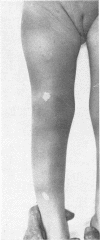Abstract
The evolution of the early clinical and EEG features in 100 children who developed the tuberous sclerosis syndrome is discussed with particular emphasis on individual variability of epileptic manifestations, skin changes, and mental defect. There were 61 boys and 39 girls. Seizures of various kinds occurred in 98 and in the first 2 years of life infantile spasms were a prominent feature (69) with a partial overlap of other kind of seizures (75). Mental defect (88) and poorly pigmented areas of the skin (77) were already detectable in the first 1 to 2 years of life, while fibroangioma of the face (adenoma sebaceum) (77) and intracranial calcifications (35) became increasingly apparent after the age of 2 to 4 years. The EEG abnormalities tended to be gross in the first 2 years of life, but their subsequent evolution was towards multifocal alterations and some areas of relatively better preserved rhythmic activity. The evolution of the various skin lesions did not run parallel either with that of the clinically detectable seizures or with the appearance of intracranial calcifications.
Full text
PDF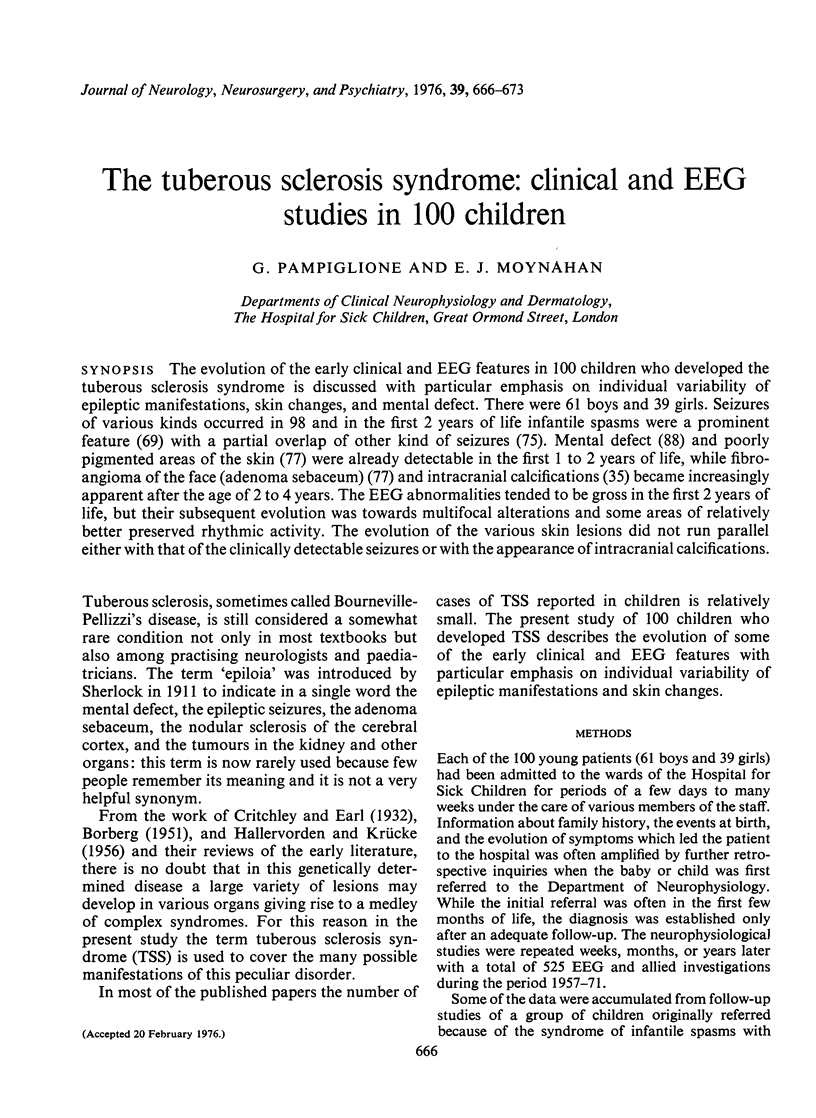



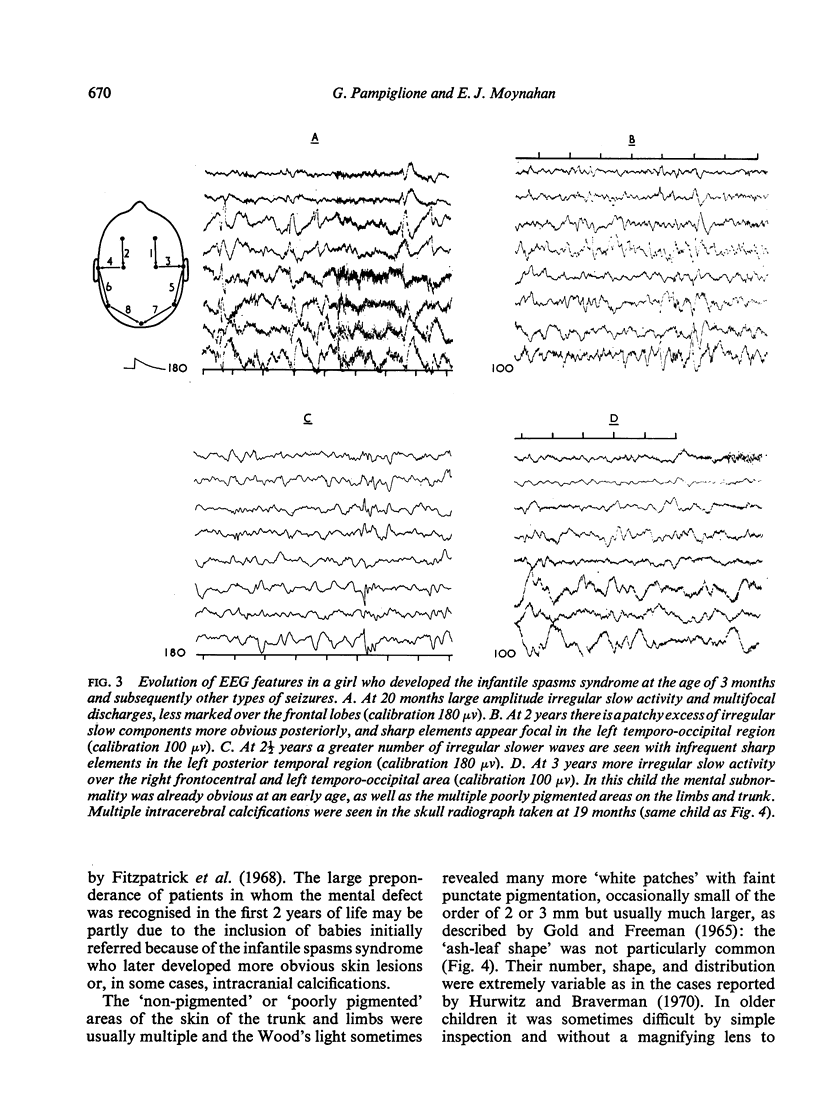
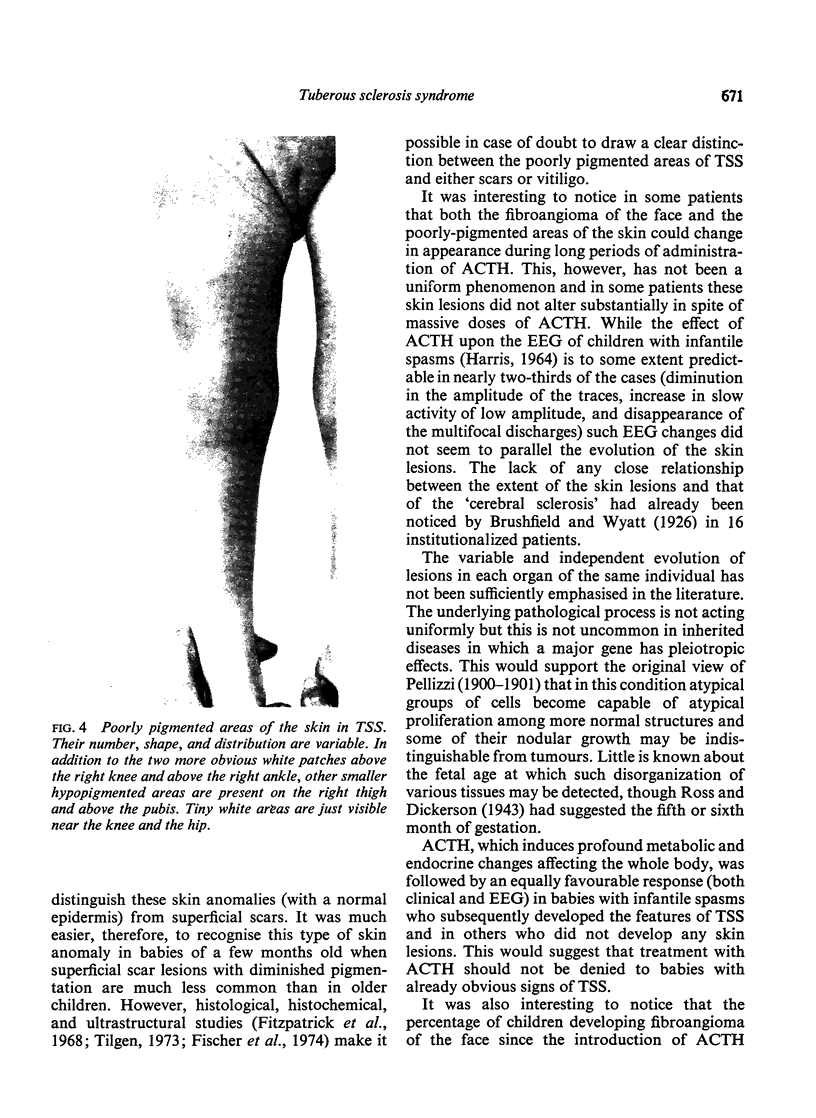

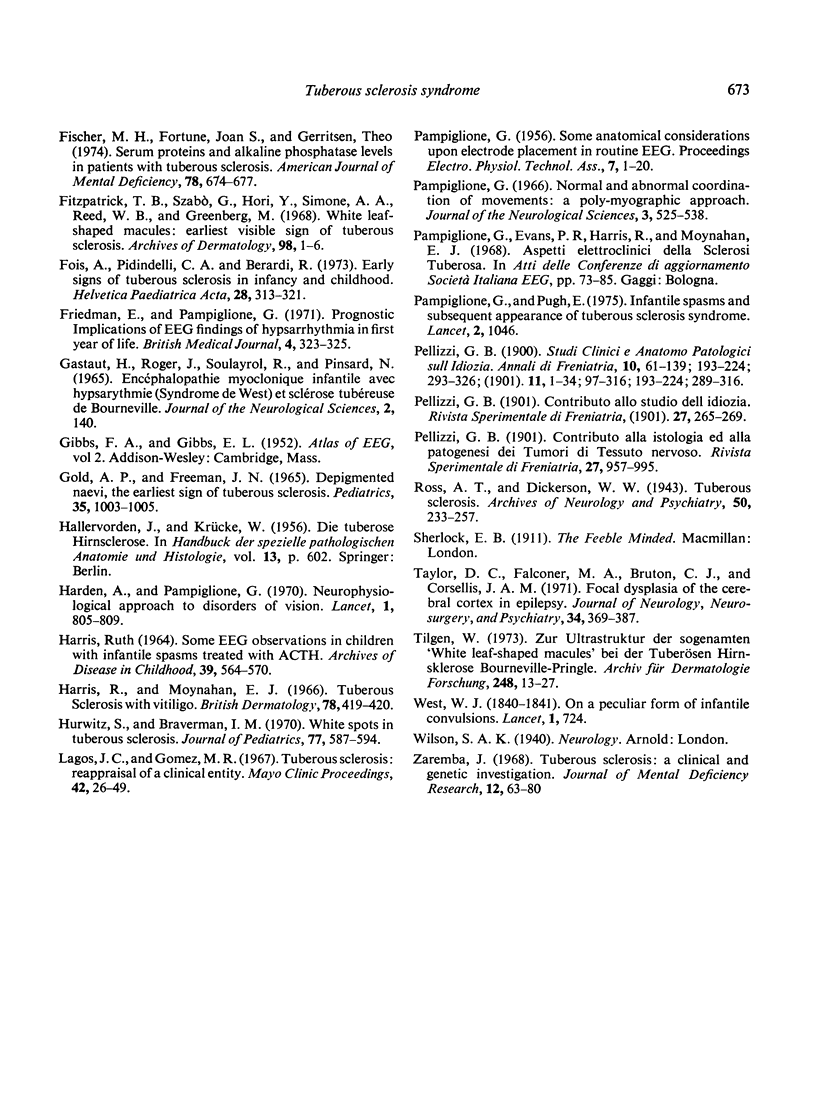
Images in this article
Selected References
These references are in PubMed. This may not be the complete list of references from this article.
- BERLAND H. I. Roentgenological findings in tuberous sclerosis; bone manifestations. AMA Arch Neurol Psychiatry. 1953 Jun;69(6):669–683. doi: 10.1001/archneurpsyc.1953.02320300002001. [DOI] [PubMed] [Google Scholar]
- Bundey S., Evans K. Tuberous sclerosis: a genetic study. J Neurol Neurosurg Psychiatry. 1969 Dec;32(6):591–603. doi: 10.1136/jnnp.32.6.591. [DOI] [PMC free article] [PubMed] [Google Scholar]
- Crichton J. U. Infantile spasms and skin anomalies. Dev Med Child Neurol. 1966 Jun;8(3):273–278. doi: 10.1111/j.1469-8749.1966.tb01747.x. [DOI] [PubMed] [Google Scholar]
- DAWSON J. Pulmonary tuberous sclerosis and its relationship to other forms of the disease. Q J Med. 1954 Apr;23(90):113–145. [PubMed] [Google Scholar]
- DEBRE R., THIEFFRY S., MOZZICONACCI P., BARGETON E., RAMADE J. La sclérose tubereuse de Bourneville chez le nourrisson et le petit enfant. Arch Fr Pediatr. 1952;9(4):342–382. [PubMed] [Google Scholar]
- DELLAROVERE M., HOARE R. D., PAMPIGLIONE G. TUBEROSE SCLEROSIS IN CHILDREN: AN EEG STUDY. Dev Med Child Neurol. 1964 Apr;6:149–157. doi: 10.1111/j.1469-8749.1964.tb02774.x. [DOI] [PubMed] [Google Scholar]
- Fischer M. H., Fortune J. S., Gerritsen T. Serum proteins and alkaline phosphatase levels in patients with tuberous sclerosis. Am J Ment Defic. 1974 May;78(6):674–677. [PubMed] [Google Scholar]
- Fitzpatrick T. B., Szabó G., Hori Y., Simone A. A., Reed W. B., Greenberg M. H. White leaf-shaped macules. Earliest visible sign of tuberous sclerosis. Arch Dermatol. 1968 Jul;98(1):1–6. [PubMed] [Google Scholar]
- Fois A., Pindinelli C. A., Berardi R. Early signs of tuberous sclerosis in infancy and childhood. Helv Paediatr Acta. 1973 Oct;28(4):313–321. [PubMed] [Google Scholar]
- Friedman E., Pampiglione G. Prognostic implications of electroencephalographic findings of hypsarrhythmia in first year of life. Br Med J. 1971 Nov 6;4(5783):323–325. doi: 10.1136/bmj.4.5783.323. [DOI] [PMC free article] [PubMed] [Google Scholar]
- GOLD A. P., FREEMAN J. M. DEPIGMENTED NEVI: THE EARLIEST SIGN OF TUBEROUS SCLEROSIS. Pediatrics. 1965 Jun;35:1003–1005. [PubMed] [Google Scholar]
- Gastaut H., Roger J., Soulayrol R., Salamon G., Regis H., Lob H. Encéphalopathie myoclonique infantile avec hypsarythmie (syndrome de West) et sclérose tubéreuse de Bourneville. J Neurol Sci. 1965 Mar-Apr;2(2):140–160. doi: 10.1016/0022-510x(65)90077-8. [DOI] [PubMed] [Google Scholar]
- HARRIS R. SOME EEG OBSERVATIONS IN CHILDREN WITH INFANTILE SPASMS TREATED WITH ACTH. Arch Dis Child. 1964 Dec;39:564–570. doi: 10.1136/adc.39.208.564. [DOI] [PMC free article] [PubMed] [Google Scholar]
- Harden A., Pampiglione G. Neurophysiological approach to disorders of vision. Lancet. 1970 Apr 18;1(7651):805–808. doi: 10.1016/s0140-6736(70)92409-8. [DOI] [PubMed] [Google Scholar]
- Hurwitz S., Braverman I. M. White spots in tuberous sclerosis. J Pediatr. 1970 Oct;77(4):587–594. doi: 10.1016/s0022-3476(70)80199-8. [DOI] [PubMed] [Google Scholar]
- Lagos J. C., Gomez M. R. Tuberous sclerosis: reappraisal of a clinical entity. Mayo Clin Proc. 1967 Jan;42(1):26–49. [PubMed] [Google Scholar]
- Pampiglione G., Pugh E. Letter: Infantile spasms and subsequent appearance of tuberous sclerosis syndrome. Lancet. 1975 Nov 22;2(7943):1046–1046. doi: 10.1016/s0140-6736(75)90343-8. [DOI] [PubMed] [Google Scholar]
- Taylor D. C., Falconer M. A., Bruton C. J., Corsellis J. A. Focal dysplasia of the cerebral cortex in epilepsy. J Neurol Neurosurg Psychiatry. 1971 Aug;34(4):369–387. doi: 10.1136/jnnp.34.4.369. [DOI] [PMC free article] [PubMed] [Google Scholar]
- Tilgen W. Zur Ultrastruktur der sogenannten White leaf-shaped macules bei der tuberösen Hirnsklerose Bourneville-Pringle. Arch Dermatol Forsch. 1973;248(1):13–27. [PubMed] [Google Scholar]



